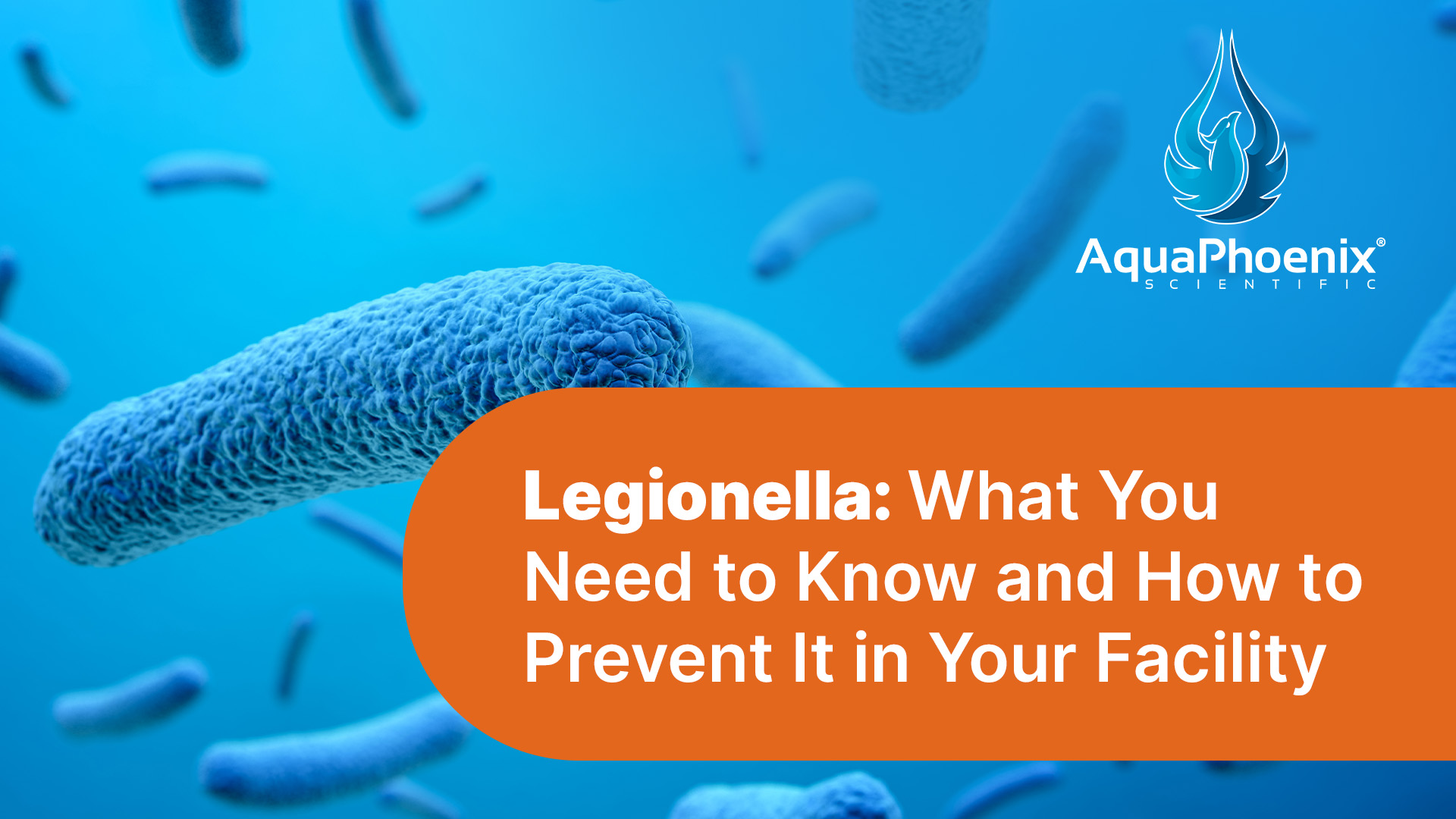August is Legionella Awareness Month, making it the perfect time to educate yourself and your team on this serious, but preventable, health risk. Whether you manage a building, operate a facility, or oversee water systems, understanding Legionella and how to control it is key to protecting public health and staying compliant with safety regulations.
What is Legionella?
Legionella is a type of bacteria found naturally in freshwater environments like lakes and streams. However, it becomes a serious health concern when it grows and spreads in man-made water systems, including:
- Cooling towers
- Hot tubs
- Decorative fountains
- Plumbing systems in large buildings
- Hot water tanks and heaters
When inhaled through water droplets or mist, Legionella can cause Legionnaires’ disease, a severe form of pneumonia. It can also cause a milder illness known as Pontiac fever. Both conditions are preventable with proper water management.
Who’s at Risk?
While anyone can get Legionnaires’ disease, certain groups are more vulnerable:
- People over 50
- Smokers or individuals with chronic lung conditions
- Those with weakened immune systems
- Hospital or long-term care facility residents
Outbreaks are often linked to poor maintenance or failure to monitor water systems effectively.
Common Sources in Facilities
In large or complex facilities, Legionella can grow in:
- Stagnant water in rarely used plumbing
- Biofilm buildup in pipes or tanks
- Warm water that sits in the 77°F–113°F range
- Poorly maintained cooling towers or HVAC systems
That’s why routine testing and water management plans are essential.
How to Prevent Legionella in Your Facility
Prevention starts with awareness and proactive maintenance. Here are key steps to reduce your risk:
1. Implement a Water Management Plan
Follow CDC guidelines to develop a comprehensive water management plan. This includes identifying potential risk areas and setting up monitoring schedules.
2. Maintain Optimal Water Temperatures
Keep hot water hot (above 120°F) and cold water cold (below 68°F) to discourage bacterial growth.
3. Flush Infrequently Used Fixtures
Run water through rarely used faucets and showerheads to prevent stagnation.
4. Regularly Clean and Disinfect Systems
Pay special attention to cooling towers, decorative fountains, and storage tanks.
5. Test Your Water Regularly
Routine testing for Legionella and other waterborne bacteria is key to identifying issues early. AquaPhoenix Scientific offers easy-to-use water testing kits and monitoring tools designed for industrial and commercial systems. Our solutions provide the insights you need to take corrective action and keep your water safe.
Legionella prevention doesn’t have to be complicated; it just requires awareness, consistency, and the right tools. By staying informed and proactive, you can help protect your facility, your team, and your community from this preventable health risk.
This month, take time to review your water systems and ensure you have a plan in place. And remember, AquaPhoenix Scientific is here to support you with dependable testing solutions every step of the way.
